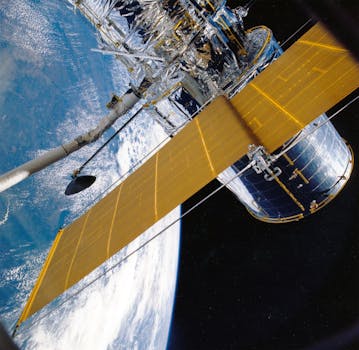Orbiting Innovations: Key Updates in Satellite Telecommunications Technology

Orbiting Innovations: Key Updates in Satellite Telecommunications Technology
Orbiting Innovations: Key Updates in Satellite Telecommunications Technology is a rapidly evolving field, with new advancements and breakthroughs being made regularly. The satellite telecommunications industry is experiencing a significant surge in innovation, with key updates in technology driving the sector forward. At the forefront of this innovation is the development of new satellite constellations, which are revolutionizing the way we communicate and access data.
Introduction to Satellite Telecommunications
Satellite telecommunications technology has come a long way since its inception. The first commercial satellite, Intelsat 1, was launched in 1965, and since then, the industry has experienced significant growth and development. Today, satellite telecommunications play a vital role in global communication, providing connectivity to remote and underserved areas, as well as supporting a wide range of applications, including navigation, weather forecasting, and Earth observation.
Advancements in Satellite Technology
Recent years have seen significant advancements in satellite technology, with the development of new satellite constellations, such as OneWeb and Starlink, which are designed to provide global internet coverage. These constellations are composed of hundreds of small satellites, which are launched into low Earth orbit (LEO) and work together to provide high-speed, low-latency internet connectivity. This technology has the potential to revolutionize the way we access data and communicate, particularly in areas where traditional connectivity is limited or non-existent.
Another key area of innovation is the development of advanced satellite antennas, which are designed to provide higher gain and greater efficiency. These antennas use phased array technology, which allows them to electronically steer and shape the beam, providing greater flexibility and performance. This technology is particularly useful for satellite communications, where the signal strength and quality can be affected by atmospheric conditions and other factors.
Applications of Satellite Telecommunications
Satellite telecommunications have a wide range of applications, from providing connectivity to remote and underserved areas to supporting critical infrastructure, such as navigation and weather forecasting. One of the most significant applications of satellite telecommunications is in the provision of broadband internet access. Satellite-based internet services can reach areas where traditional connectivity is limited or non-existent, providing access to information, education, and economic opportunities.
Satellite telecommunications also play a critical role in supporting emergency response and disaster relief efforts. In the event of a natural disaster, satellite communications can provide a vital lifeline, enabling emergency responders to coordinate their efforts and communicate with affected communities. This technology can also be used to provide critical infrastructure, such as navigation and weather forecasting, which are essential for emergency response and recovery efforts.
Future of Satellite Telecommunications
The future of satellite telecommunications is exciting and rapidly evolving. With the development of new satellite constellations and advancements in technology, we can expect to see significant improvements in connectivity and access to data. One of the most significant trends in the industry is the growing demand for satellite-based internet services, particularly in areas where traditional connectivity is limited or non-existent.
Another key trend is the increasing use of satellite telecommunications in support of critical infrastructure, such as navigation and weather forecasting. This technology is essential for a wide range of applications, from aviation and maritime to emergency response and disaster relief. As the industry continues to evolve, we can expect to see new and innovative applications of satellite telecommunications, from providing connectivity to remote and underserved areas to supporting critical infrastructure and enabling new technologies, such as autonomous vehicles and smart cities.




